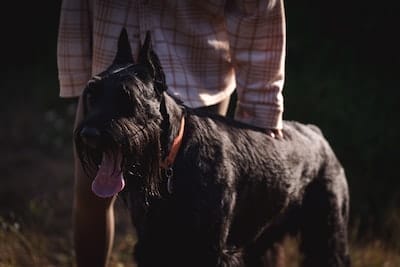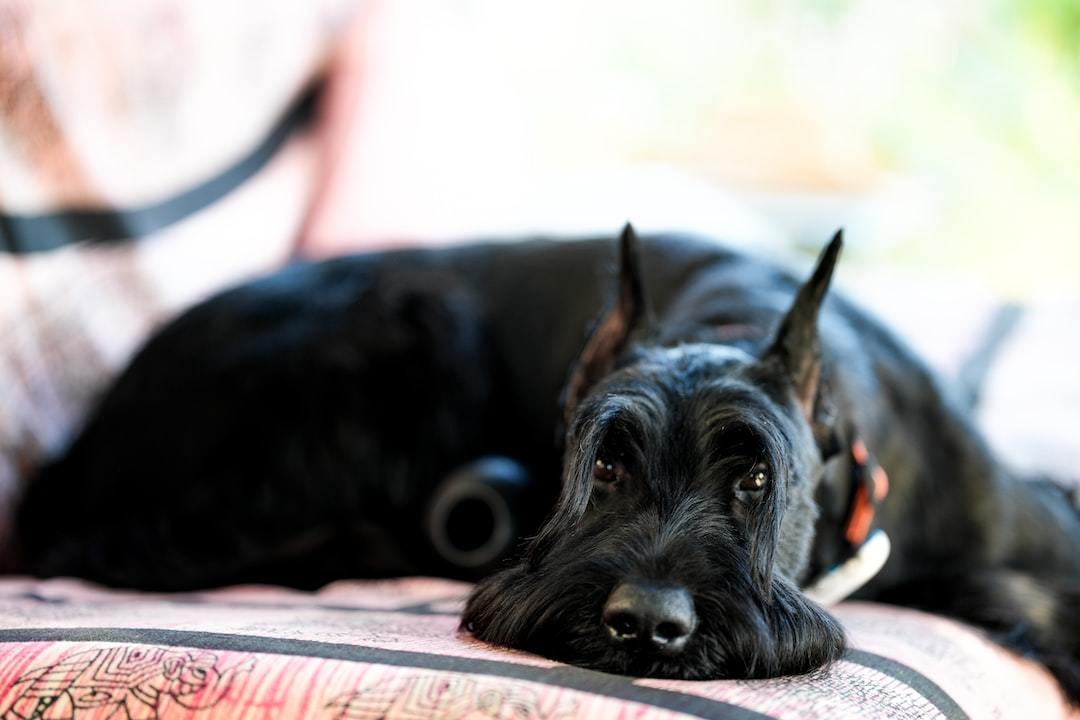Giant Dog Breeds Guide
Let me pull back the curtain on a world where towering frames and gentle hearts rule — the realm of giant dog breeds. These colossal canines, from Great Danes to Bernese Mountain Dogs, embody strength paired with tenderness. Think of them as nature’s grand sculptures that breathe, bark, and bound into our lives.
Diving deep into their stories means unraveling centuries-old lineage; these dogs were not just pets but guardians, war companions, and symbols of nobility. They’re more than their massive stature — they carry histories rich with loyalty and bravery.
This sneak peek is your ticket to understanding what makes giant dog breeds tick: from their skyscraper-like heights tipping well over 100 pounds to navigating the health challenges unique to their size. By the journey’s end, you’ll be versed in how best to nourish these giants for longevity because knowing them is key to loving them right.
Table Of Contents:
- Popular Giant Dog Breeds
- Giant Dog Breeds Overview
- Size Expectations for Giant Dog Breeds
- Lifespan and Health of Giant Dog Breeds
- Nutritional Needs of Giant Dog Breeds
- Move Over Big Guy

Popular Giant Dog Breeds
Giant dog breeds often capture the imagination and hearts of pet lovers due to their impressive size and gentle demeanors. Despite their large stature, many of these dogs are known for being loving family pets. Let’s explore some popular giant dog breeds, focusing on their sizes, original purposes, and unique needs.
The Great Dane: The Gentle Giant
The Great Dane is one of the most recognizable giant dog breeds, standing up to 32 inches at the shoulder. Originally bred for hunting wild boar in Germany, today’s Great Danes are peaceful giants that thrive on companionship. They require ample space to move around but surprisingly do well in apartment living if given regular exercise. Learn more about Great Danes here.
The English Mastiff: A Colossal Companion
English Mastiffs hold records for being among the heaviest dog breeds; males can weigh anywhere from 160 to 230 pounds or more! Bred as ancient war dogs and guardians, modern Mastiffs are affectionate with families and calm. Their massive size requires careful attention to diet and exercise to prevent obesity-related health issues. For detailed information on caring for an English Mastiff visit this link: English Mastiff Pros and Cons.
Saint Bernard: The Alpine Rescuer
Famous for their role in alpine rescue missions along the Swiss-Italian border, Saint Bernards are incredibly strong dogs capable of traversing deep snow over great distances. These gentle giants stand up to 30 inches tall at the shoulder and exhibit boundless kindness towards children, making them excellent family pets with enough indoor and outdoor space. Discover more about Saint Bernards by clicking here: St Bernards Pros and Cons.
- All these giant breeds share common requirements such as spacious living conditions,
- a balanced diet tailored to large breed needs,
- and regular veterinary check-ups, especially focused on joint health due to their heavy frames.
Giant dog owners must be prepared physically and financially since veterinary care costs can increase quickly because of their size. However, these magnificent creatures’ love and loyalty make all efforts worthwhile.
Giant breed enthusiasts should always consider adoption first,
as many large dogs are in shelters looking for loving homes. For those interested in adopting a giant breed, please visit your local animal shelter or dedicated rescue organizations specializing in larger dogs.
If you need to talk to a vet and it’s not an emergency, online vet services like Ask a Veterinarian are available online 24/7.
For more information on plans tailored specifically for gigantic pals, check out Pet Assure Mint Wellness Plan, because peace of mind is one thing you should always supersize when it comes to caring for your biggest family member.
Giant Dog Breeds Overview
Step into the realm of gentle giants, where dog breeds tower over their canine counterparts. With roots tracing back to ancient times, these massive pups have evolved from war dogs and guard dogs to beloved family companions. Among them are some of the most adored and awe-inspiring breeds, like Great Danes and Bernese Mountain Dogs. Giant dog breeds need a suitable-sized crate for their sanctuary at home.
Amazon has a wide variety of giant-sized items.
The Gentle Giants Among Us
Dubbed as ‘gentle giants,’ many large dog breeds carry a docile yet dignified demeanor that belies their imposing stature. The breed group encompasses a variety that has served alongside humans for centuries—think Scottish Deerhound with its noble lineage or Saint Bernard, the iconic rescuer in snowy mountains.
Despite being considered one breed group due to size, giant dog breeds hail from diverse backgrounds—the protective Anatolian Shepherd Dog originating from Turkish plateaus or the Tibetan Mastiff with its majestic presence honed by ancient Japanese lineage. These big dogs share physical grandeur and traits suited for hard work, whether herding livestock as seen in Bernese Mountain Dogs or pulling sleds like Alaskan Malamutes effortlessly do.
AKC Breed Explorer gives you a window into this fascinating world of giant canines; every click reveals more about each unique breed’s history.
Beneath those layers of fur—whether double-coated like an English Mastiff or sporting skin folds akin to a Neapolitan Mastiff—you’ll find hearts as vast as their bodies. And let’s talk numbers: male weight often exceeds 100 pounds across different varieties within this magnificent category, making them true contenders for titles such as largest dog breeds around.
Size Expectations for Giant Dog Breeds
When you picture a giant dog breed, think of a creature that commands the room with its size alone. These are not your average lap dogs; we’re talking about canines whose male weights often tip the scales at over 100 pounds. Unsurprisingly, they belong to an exclusive club known as the biggest dog breeds.
Measuring Up the Giants
The realm of large dogs is diverse, ranging from towering Great Danes to powerful Bernese Mountain Dogs. With height and weight as their calling cards, these colossal pups redefine ‘large’ in large dog breeds. Picture this: some males stretch taller than most humans on their hind legs. They’ve got bulk, too—imagine trying to wrap your arms around an English Mastiff or Irish Wolfhound.
But it’s not just about stature with these gentle giants; each breed carries its unique history and charm from ancient lineage like Tibetan Mastiffs serving as guard dogs in remote monasteries to Scottish Deerhounds who were once prized by the nobility for hunting game across rugged terrains—their stories are as grand as their physical dimensions.
Dog owners need ample living space for these massive buddies—they’re certainly not suited for tiny apartments where medium-sized dogs might comfortably reside. So before bringing home one of these majestic creatures, ensure there’s enough room indoors and out.
Lifespan and Health of Giant Dog Breeds
Giant dog breeds tug at our heartstrings with their massive paws and big, soulful eyes. But those who share their homes with these gentle giants know that owning a larger-than-life pup comes with equally large responsibilities—especially regarding health.
Navigating Health Concerns for Longevity
Unfortunately, the life expectancy of giant dog breeds often falls short compared to their smaller counterparts. Most large dogs are considered seniors by age 6 or 7, which means your time together is precious—and packed with memories from puppyhood through their golden years.
Why do these behemoths have shorter lifespans? Their size puts them at risk for age-related diseases like hip dysplasia—a condition as common in this category as wagging tails on happy pups. This joint problem can cause pain and mobility issues, making daily exercise challenging but no less crucial. And let’s not forget about skin folds; while they might add to the adorableness factor on a Saint Bernard or Bloodhound, they’re also prone to spots for infections if not kept clean.
To help keep your colossal companion around longer, stay ahead of potential problems with regular health testing. While we can’t change genetics, informed care makes all the difference between managing conditions early versus reacting too late. Always consider pet insurance—an essential safety net given how vet bills can grow faster than a Great Dane pup.
Nutritional Needs of Giant Dog Breeds
Feeding a giant dog breed is like fueling up a large truck – it requires more energy and the right mix to keep it running smoothly. With breeds that tip the scales, getting their diet spot on is crucial for maintaining health without accelerating growth too quickly.
Crafting a Balanced Diet Plan
Giant dogs don’t just eat more; they need carefully calibrated meals that support their massive bodies while preventing joint issues common in these colossal canines. These gentle giants have unique feeding requirements compared to your average Fido. For instance, pet insurance plans often emphasize the importance of managing food intake because rapid weight gain can lead to skeletal problems like hip dysplasia.
A balanced diet plan for your towering pal should include high-quality protein sources – think lean meats or fish – but with controlled calorie intake to avoid obesity, which adds extra strain on those big bones. Plus, let’s not forget about carbohydrates for energy and fiber from vegetables and grains for digestive health.
Now, you might not know that despite needing more calories per pound of body weight, these majestic animals require fewer than smaller dogs. This paradox means serving up larger portions but less dense in calories, thus giving them all they need without overdoing it.
The American Kennel Club suggests regular health testing, especially when you’re raising such sizable pooches since early detection goes a long way toward fixing potential issues before they become serious concerns. Remember, folks, bigger isn’t always better unless we’re talking about hearts – which these lovable lugs have plenty of.
If you need to talk to a vet quickly, online vet services like Ask a Veterinarian are available online 24/7.
Move Over, Big Guy
Embrace the world of giant dog breeds, where every day is an adventure with a larger-than-life companion. Remember, these gentle giants demand space in your home and heart.
Remember their need for balanced nutrition; it’s crucial for maintaining their colossal health. Tackle those health concerns head-on; early detection can lead to a longer, happier life.
Caring for them is hard work but immensely rewarding. Cherish the moments with these ancient guardians by your side because although they may not be around as long as smaller dogs, they make every moment count.
If you’re ready to take on the challenge of owning one of these majestic creatures, let this guide be your first step towards becoming an expert on giant dog breeds.

